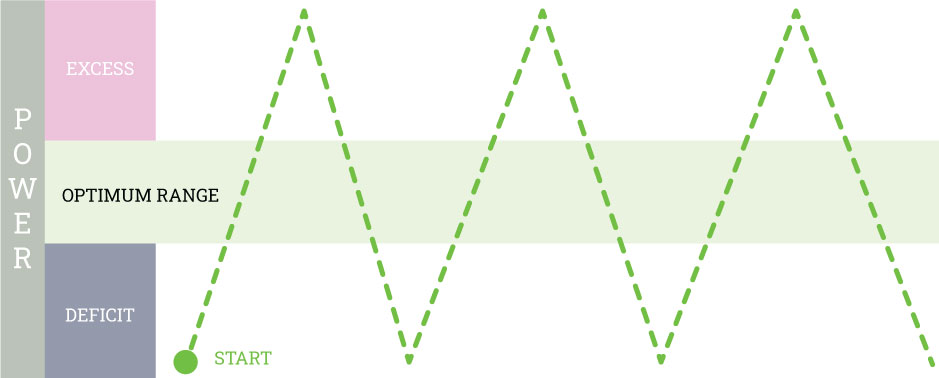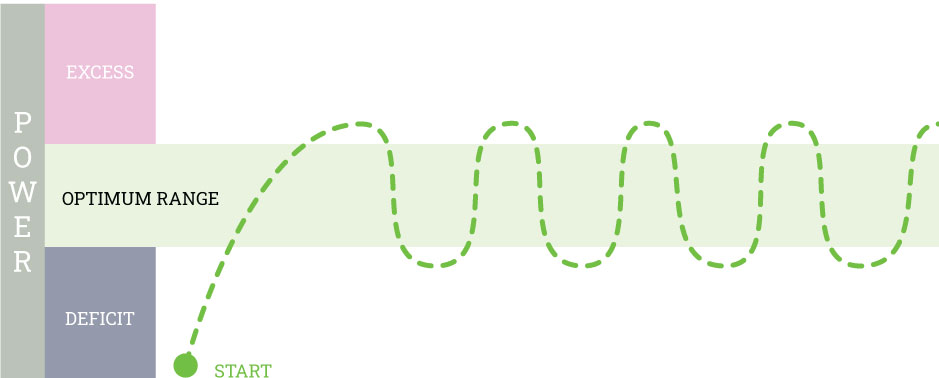By now, most people who are shopping for new appliances have heard about inverter technology. However, most probably only have a vague inkling of what this technology is and what it does for home appliances.
Put simply, an inverter is a device that controls the frequency of the incoming electrical current that goes to the appliance, thus consuming less electricity. They also tend to make the appliance more durable as the motor or the compressor is used less.
To arm you with better information before your next home appliance shopping spree, we will do a deep dive on what inverter technology is, what it does, and how it benefits you and the environment.
How conventional appliances work
Let’s start with the basics first. You are probably aware that there two types of electrical currents in use today: Direct Current (DC) and Alternating Current (AC). DC is mostly used for small battery-powered devices, while AC is the one powering the electrical sockets in our homes.
In an AC circuit, the direction of the current reverses in a frequency of 60 times per second (60Hz). Meanwhile, DC currents flows only in once direction. Since the direction does not change at all, it doesn’t have a frequency value (0Hz).
In the Philippines, the standard voltage in our electrical sockets is 220V and the frequency is 60Hz. This means that whenever you plug in and turn on an appliance, it generally gets that much voltage at that frequency.
Note: in other countries, the most common rated voltage and frequency is 220V/50Hz or 110V/50Hz
To better visualize this, pretend that your appliance is a car – except that its gearbox does not have primera, segunda, nor tercera – only ON and OFF. Imagine driving around in a car that is on park for half of the time but zooms at 100km/h every time you step on the pedal – with no other gear in between. This is incredibly wasteful of gas and will put a great strain on your car’s engine. If we convert this idea back in to the real of home appliances, that means that our appliances are wasting electricity and are overworking their motors.
To improve upon this, home appliance manufacturers introduced inverter technology equipped models to help reduce energy consumption without compromising its performance.
How inverter technology works in appliances
An inverter is a small part that is housed inside a device called the variable frequency drive (VFD). First another component in the VFD called the rectifier converts the AC power supplied by house sockets to DC. While the energy flow is still in DC, it gives an opportunity for the VFD to change the frequency from the standard 60Hz to whatever power is needed by the appliance’s motor. After that, the inverter kicks in to convert the DC with the changed frequency back into AC that the appliance can use to power it operations. This reduced draw in electricity translates to better energy efficiency, and thus savings.
In contrast, the flow of energy is not regulated when it comes to non-inverters. This means that non-inverter appliances get full power even if they don’t need it.


When an appliance is equipped with an inverter, the electric current will pass through the inverter first before going to the motor. While the inverter converts the AC to DC, it also changes its frequency. This controls the speed of the motor depending on its needs, and thereby saves energy.
Appliances that use inverter technology
Inverters have a wide range of applications, and they are most commonly seen in appliances that have a motor or compressor.
Aircons
An air conditioner works by continuously evaporating and condensing a refrigerant gas in a closed system. It does this with the help of a compressor.
To maintain the set temperature in a room, the compressor of non-inverter aircons turn on and off depending on what its thermostat is telling them to do. This is why you hear an aircon turning silent and then roaring back to life after a few minutes.
Since the compressor of non-inverter ACs run at a fixed speed, they always run at maximum speed even if the adjustment needed is minuscule.
On the other hand, the compressor of an inverter aircon is always turned on, but it adjusts its speed depending on how much power is needed for it to maintain the set temperature.
We’ve written a piece where we did the cost-benefit analysis of owning an inverter vs. non-inverter air conditioner. Go check it out!
FURTHER READING: Air Conditioner Buying Guide
Refrigerators
A refrigerator works using the same principle an air conditioner uses to produce a cool environment. It also employs a compressor as well.
The refrigerator’s thermostat monitors the temperature inside the fridge. For non-inverters, the thermostat tells the compressor to stop when it gets too cold; and when it gets too warm, it turns the compressor on again.
Same as with inverter aircons, an inverter refrigerator’s compressor is always working. It just sends the appropriate power needed to maintain the set temperature in the refrigerator.
Remember, your are using refrigerators 24 hours a day all year – these energy savings do add up!
We’ve written a piece where we did the cost-benefit analysis of owning an inverter vs. non-inverter refrigerator. Go check it out!
FURTHER READING: Refrigerator Buying Guide
Washing Machines
A front-loading washing machine works by rotating its drums to move clothes in and out of the water; meanwhile, a top loader rotates a part called the agitator (or pulsator) to create rotational force in the water. Both types use a motor to achieve this.
As with the aircon’s and refrigerator’s compressors, a washing machine’s motor is also set at the same speed – regardless of the weight of the load you put in.
An inverter washing machine allows the motor to run at the optimum speed depending on the weight of its load.
Aside from this, inverter washing machines are usually powered by Direct Drive motors (DDM) instead of the more common belt-driven system. DD motors are more durable than belt-drive motors. They are also more efficient as the power is going directly to the drums or the agitator – without the belt as a middleman; this also reduces noise and vibrations during operation.
We’ve written a piece where we did the cost-benefit analysis of owning an inverter vs. non-inverter washing machine. Go check it out!
FURTHER READING: Washing Machine Buying Guide
Benefits of inverter technology
There are several advantages an inverter-equipped appliance holds over models who don’t have an inverter.
More efficient
As opposed to a non-inverter appliance, inverter appliances operate at a controlled and consistent speed, which means wasted energy is avoided. This is true for both compressors (AC and refrigerator) and DD motors (washing machine).
After achieving the desired temperature, and inverter compressor maintains the temperature by maintaining a low compressor speed; this uses significantly less energy compared to non-inverter compressors.
Longer life-span
Motors (especially compressors) experience the most stress during startup. Since non-inverter compressors start and stop periodically, they can wear out much earlier than inverter compressors. You can see this reflected on appliance manufacturers’ warranty policies; inverter compressors are covered under warranty for 10+ years. Meanwhile, it’s only 5 years for non-inverters.
Silent Operation
For compressors, the noisiest part of the operation is during startup. This is why you hear air conditioners and refrigerators being and silent and then suddenly the compressor starts roaring back to life.
After an inverter compressor starts its cycle, it maintains the temperature by maintaining a low compressor speed; this emits considerably less noise compared to non-inverters.
Conclusion
Whether it be in air conditioners, refrigerators, or washing machines, inverter technology is clearly not just marketing hype.
While they cost more upfront than non-inverters, the savings in electricity and a longer-lasting motor will pay you back in dividends as the years go by.
Sources
Woodford, C. (2020, August 17). Inverters. Explain That Stuff. https://www.explainthatstuff.com/how-inverters-work.html

Miguel Mores worked for 5 years as a member of the product management team for a home appliance company in the Philippines. He started 101appliance to answer the most common customer questions that he has encountered during his time in the industry. He now works in the digital marketing field and manages a small online bookstore on the side.


Throughout my career, I’ve never heard a device that changes DC to AC called a rectifier. Every usage I’ve seen has had a rectifier change AC to DC. Did you have a typo or some similar error.
Hi there! Good catch, I seem to have switched these components roles. I’ll be editing this post now to reflect this change.
Thanks for your feedback!
Nice.
I sell electronics,I was researching on the benefits of inverter in home appliances,so I can tell my customers about it.
You stated it all.thanks